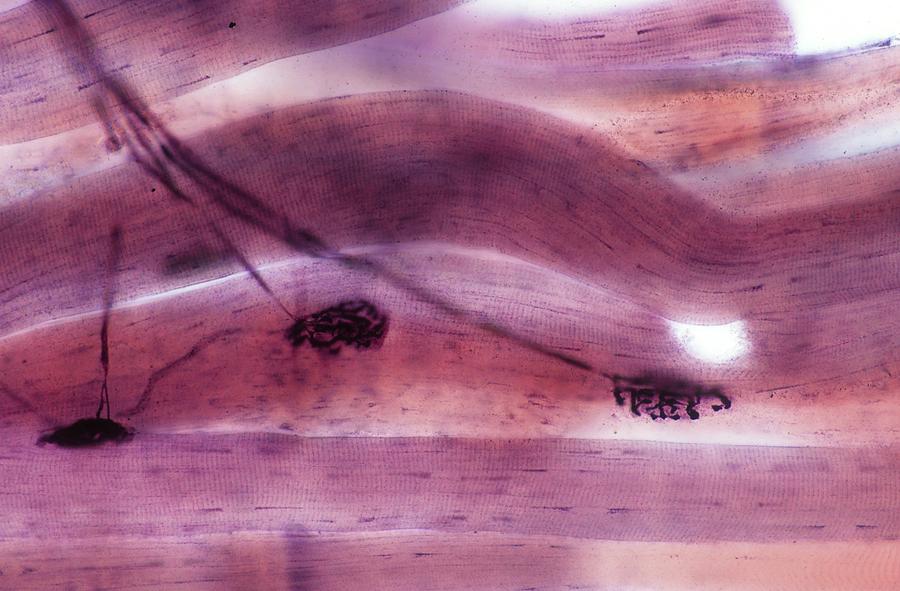

The median nerve provides sensation to the thumb side of the palm, the thumb, index, middle and half of the ring finger. It also supplies nerves to the lumbrical muscles to the index and middle fingers. In the hand, the median nerve supplies the thenar eminence - the muscles at the base of the thumb - with nerves. The median nerve is likely the most well known nerve of the brachial plexus because it can be compressed as it crosses the wrist and cause carpal tunnel syndrome. The exception is that the ulnar nerve, not the median nerve, bends the flexor carpi ulnaris and the flexor digitorum profundus muscles to the small and ring fingers. It also pronates the forearm (rotating the hand to face palm down). Its function allows the wrist and fingers to bend. In the forearm, the median nerve supplies almost all the flexor muscles and all the pronator muscles of the forearm with nerves. The median nerve does not provide any function until after it crosses the elbow. The median nerve travels along the inside of the arm near the brachial artery. The brachial plexus travels under the clavicle and through the armpit (axilla). The brachial plexus is a group of nerves that branches from the cervical spine (neck). The median nerve is formed from the C5, C6, C7, C8 and T1 nerve roots of the brachial plexus. The radial nerve also provides sensation to the thumb side of the back of the hand. Radial nerve injury can lead to wrist drop – the inability to straighten the wrist. In the forearm the nerve powers all the muscles that straighten the wrist and fingers. The nerve then travels on the outside of the elbow (the lateral side) and into the outside of the forearm. Because the radial nerve wraps around the humerus bone, it can be stretched or torn when the humerus bone is broken.

The nerve gives function to the triceps muscles on the back of the arm to straighten the elbow. In the upper arm the radial nerve wraps around the back side of the humerus bone.

The radial nerve is formed from the C5, C6, C7, C8 and T1 nerve roots of the brachial plexus. Additionally, such an injury can result in loss of sensation to the small and ring fingers. A cut to the ulnar nerve in the forearm can lead the clawing of the small and ring finger of the hand and weakness of most of the hand muscles. The ulnar nerve can be injured by a cut anywhere along its course. It also provides sensation to the back of the small finger side of the hand. The ulnar nerve provides sensation to the small finger side of the palm, the small finger, and the side of the ring finger next to the small finger. The nerve powers almost all of the small muscles in the hand including the hypothenar muscles, the lumbricals to the ring and small finger, the palmar and dorsal interossei muscles, the adductor pollicus, and the deep head of the flexor pollicus brevis. The main action of the ulnar nerve is in the hand. It powers the forearm muscles that bend the tips of the small and ring fingers (the flexor digitorum profundus) and also one of the muscles that bends the wrist (the flexor carpi ulnaris). The ulnar nerve then travels on the inside of the forearm. Cubital tunnel syndrome is a very common problem cared for by hand surgeons. The ulnar nerve can also be compressed when it crosses the elbow and cause numbness and tingling in the small and ring fingers and weakness of the hand.
#NERVE ENDINGS SKIN#
The ulnar nerve is very close to the skin at the elbow, so it is easy to bump.

When you hit your “funny bone” and get numbness and tingling in your fingers as well as a sharp electrical pain, you are actually hitting your ulnar nerve as it crosses the inner (medial) part of the elbow joint. The C8 and T1 roots are part of the brachial plexus that travels from the cervical spine, under the clavicle, through the armpit (axilla), and down the inside of the arm to the inner elbow. The ulnar nerve is formed from the C8 and T1 nerve roots. Nerves have specialized receptors for different inputs like hot, cold, sharp and vibration. Smaller nerves are grouped into larger rope-like groups that travel up and down the body. Peripheral (outside of the central nervous system) nerves are tubes that are special in their ability to transmit electric impulses along their length and into or away from the central nervous system.


 0 kommentar(er)
0 kommentar(er)
